Photos of the Moon with RX100 M4 - Mid-May 2019
Sony RX100 M4, Mid-May 2019 | Comparison of the Days | Conclusions
On this page I present photos of the crescent moon and the days after until almost the full moon. I took the photos on May 12-17, 2019 with the Sony RX100 M4 to document various structures on the moon. Mostly, I used the PS 72/432 refractor (10 mm eyepiece), on the first day also the Maksutov telescope Skymax-127 (32 mm eyepiece). I just held the camera to the eyepiece and did not use a cable release. Due to these "suboptimal" conditions, only a few photos were really sharp. My new 10 mm Televue eyepiece has a large rear lens and a rubber shell into which the camera lens fits well. This makes taking photos using the 1:50 method a bit easier...
Sony RX100 M4 - Mid-May 2019
Most of the following photos were taken with the refractor PS 72/432 and a 10 mm eyepiece on the AZ-Pronto mount. I used the Sony RX100 M4 camera with manual exposure. I note the shooting data under the respective photos.
All the photos were cropped and post-processed. Clicking a photo opens this in double size (1:1) in a new window or tab. Larger versions are linked to below the photos.
May 12, 2019, PS 72/432 with 10 mm Eyepiece
The photos taken on that day were largely underexposed. The first two examples (upper row) demonstrate this clearly. Later photos were somewhat better exposed and therefore show more contrast, as the next two photos (lower row) demonstrate. As far as the recognizability of details is concerned, however, I do not see much difference between the earlier and the later photos of this day. Photo 4, however, is an exceptional photo with regard to detail sharpness!
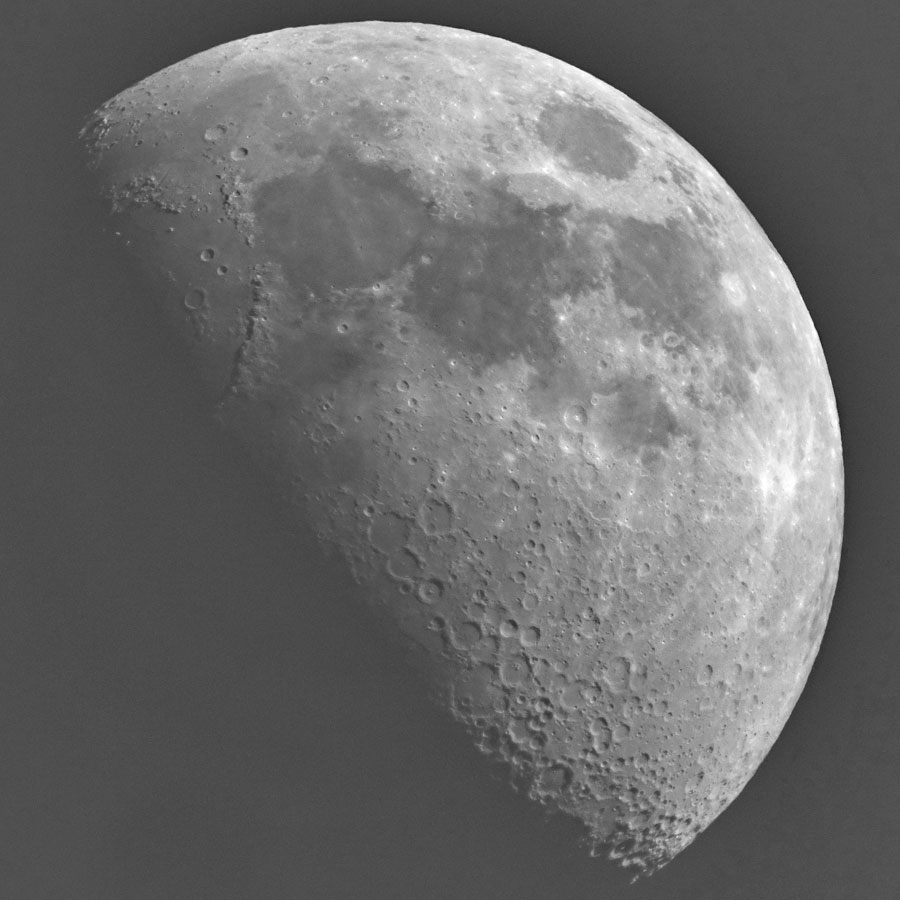 |
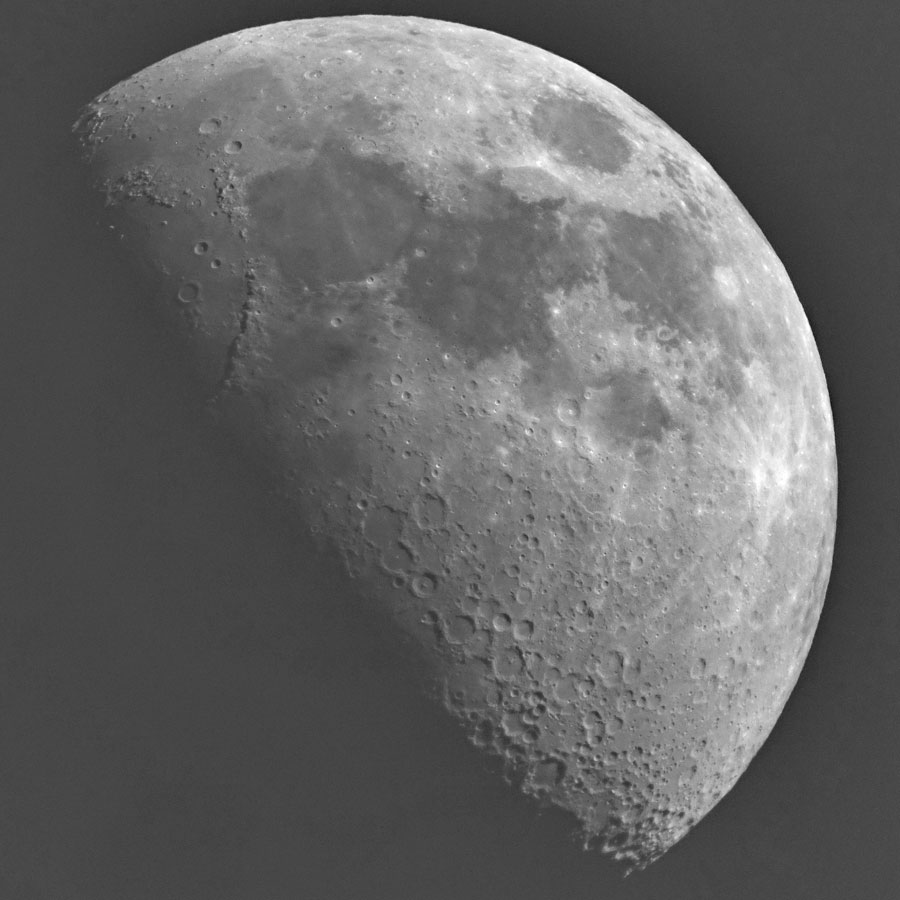 |
|
PS 72/432, ISO 125, 1/250 sec, f/2.8, 50 mm,; 3000 pixels |
PS 72/432, ISO 125, 1/250 sec, f/2.8, 50 mm; 3000 pixels |
|
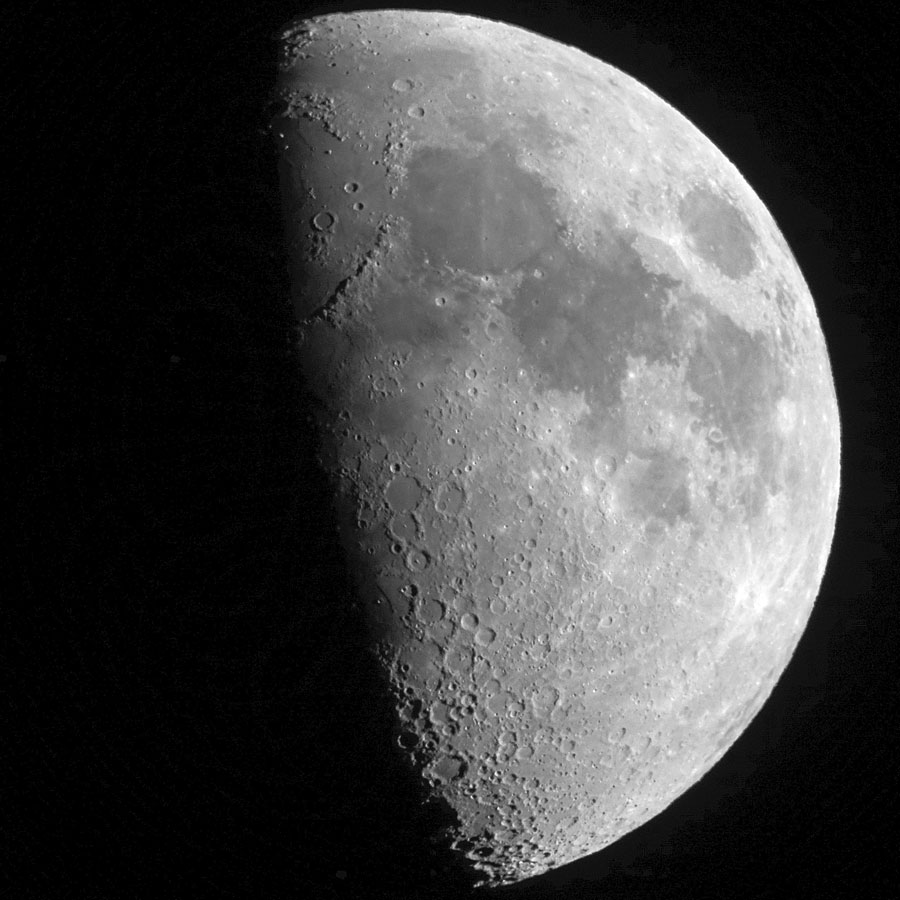 |
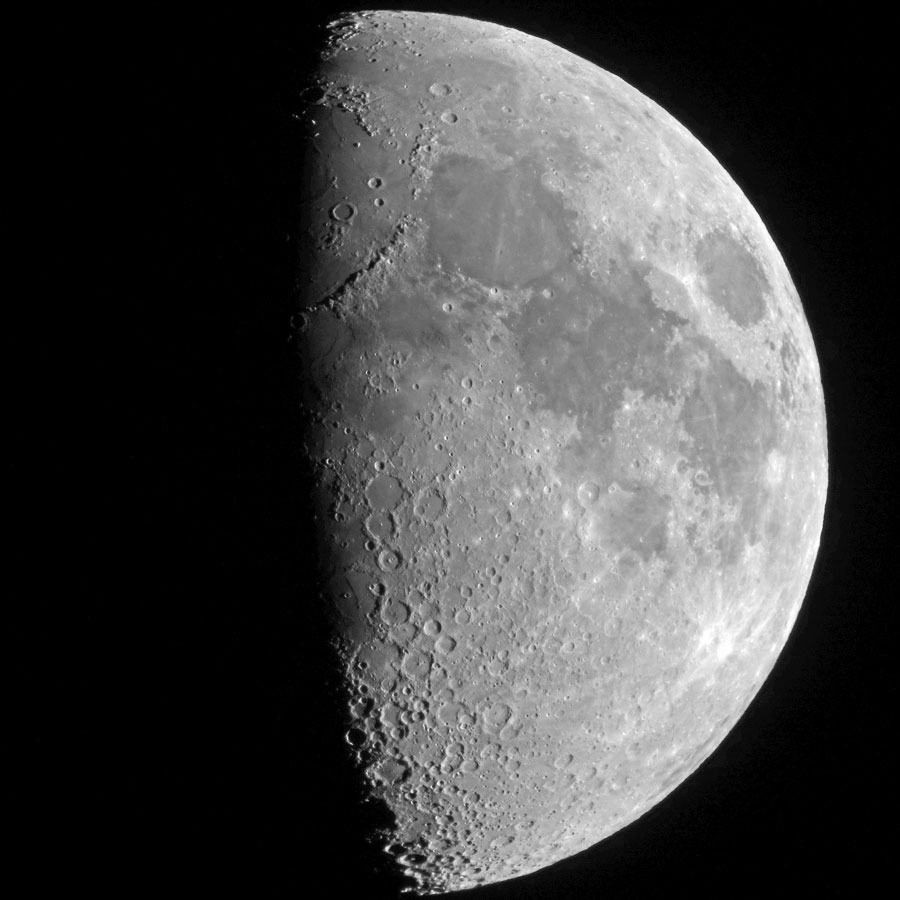 |
|
PS 72/432, ISO 200, 1/250 sec, f/2.8, 50 mm; 3200 pixels |
PS 72/432, ISO 125, 1/125 sec, f/2.8, 50 mm; 3200 pixels |
On this day, I recognized certain moon structures in the telescope for the first time, which I usually only found in photos afterwards. This is probably because I did not know these structures before and got to know them through my photos, for example by creating my "moon walk" pages and a moon ABC. Much of it, I forgot immediately and have to look it up again, but one or the other structure is still in my memory. These include Vallis Alpes and Rupes Recta, both of which I saw almost better in the telescope than later in the photos. In the following I show some examples from the photos above:
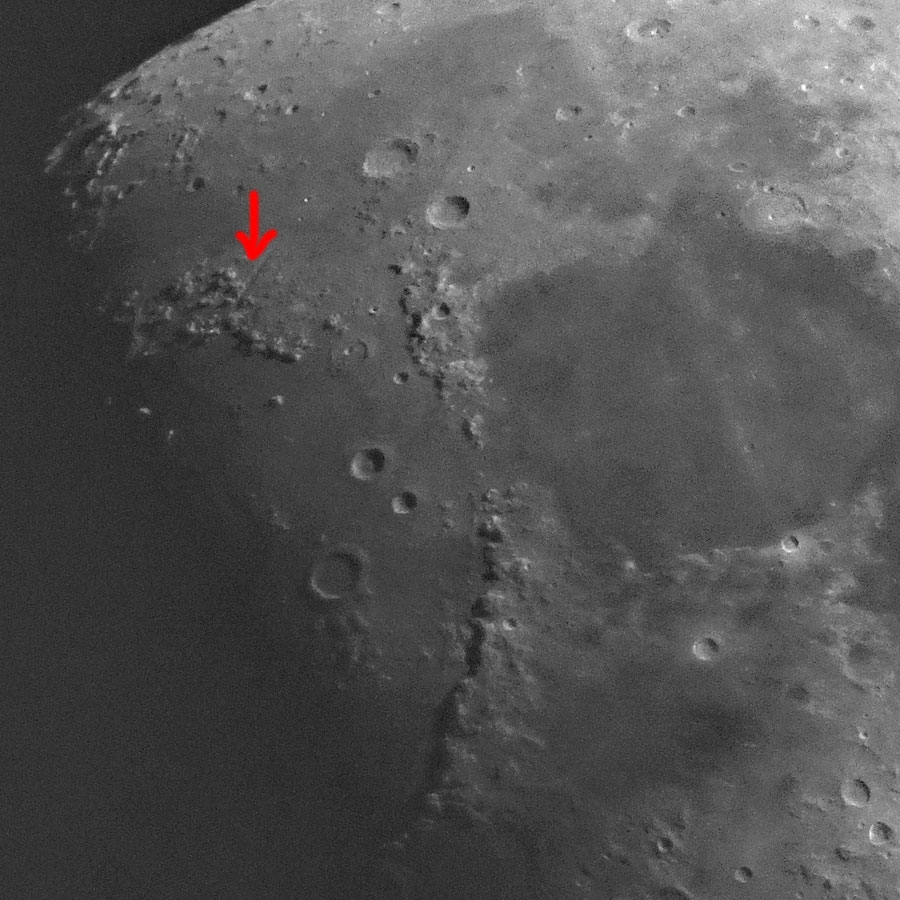 |
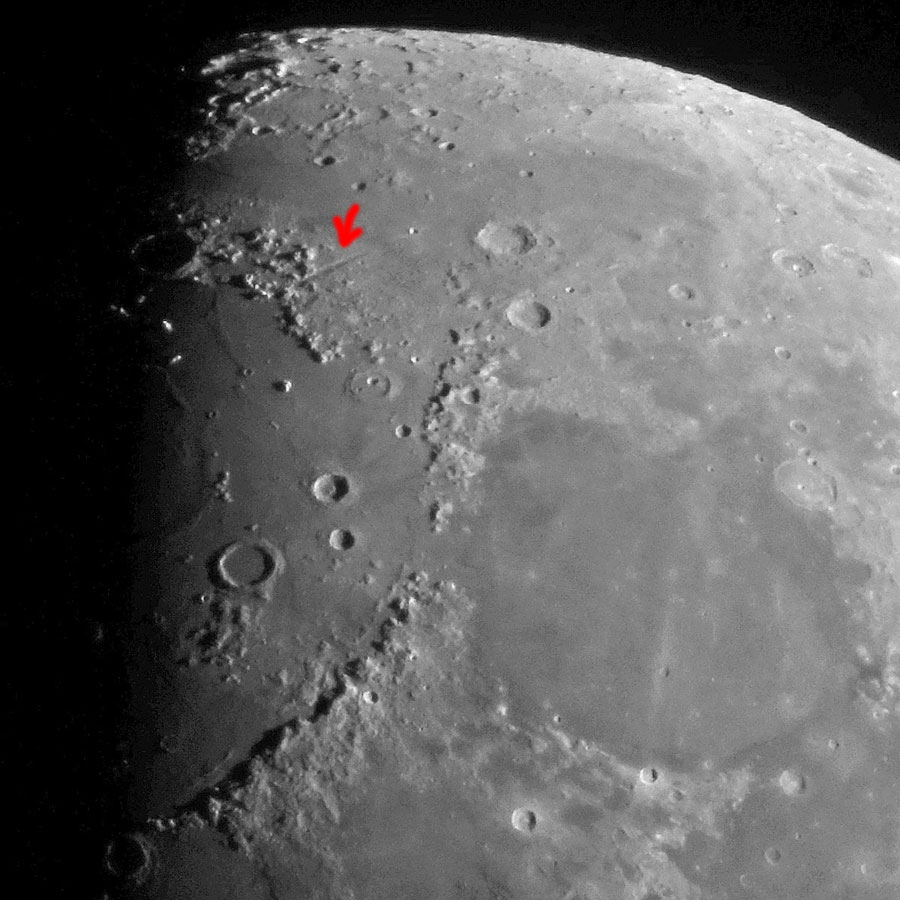 |
|
Vallis Alpes - from photo 2; 1200 pixels |
Vallis Alpes - from photo 4; 1200 pixels |
|
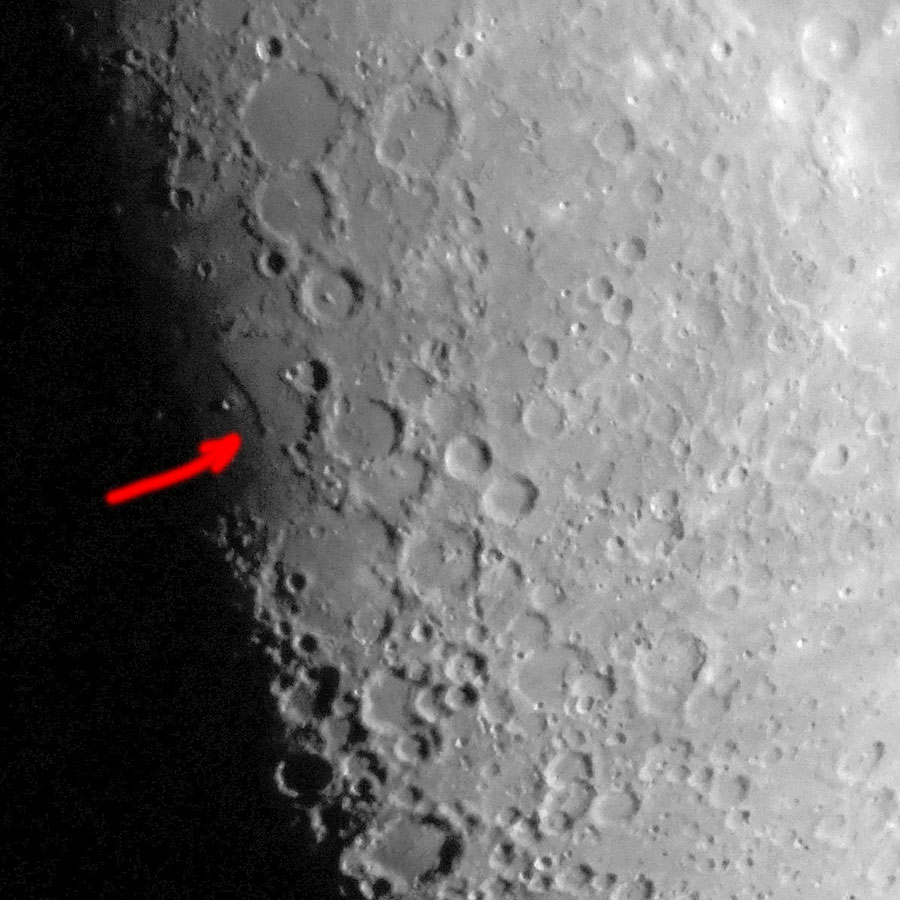 |
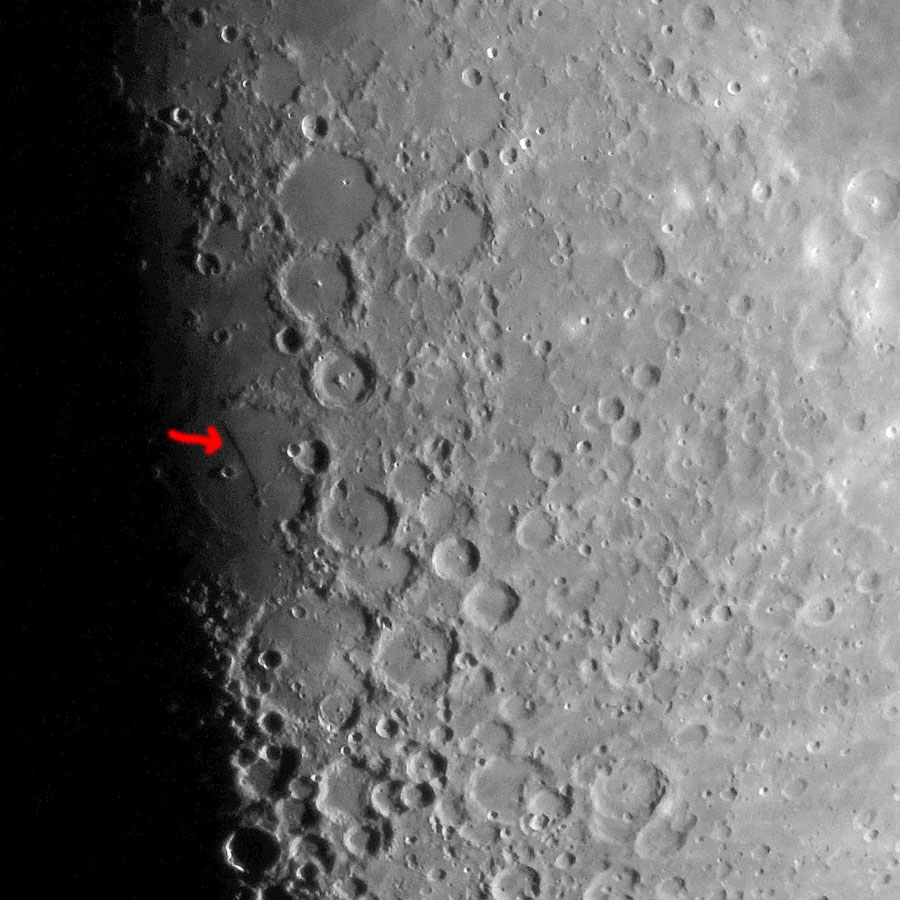 |
|
Rupes Recta - from photo 3; 1200 pixels |
Rupes Recta - from photo 4; 1200 pixels |
May 12, 2019, Skymax-127 with 32 mm Eyepiece
For comparison with my refractor photos, I also took photos with my Maksutov telescope Skymax-127, albeit not under optimal conditions, but only using to the 1:50 method (camera held to the eyepiece). In this respect, I did not exploit the full potential of this telescope.
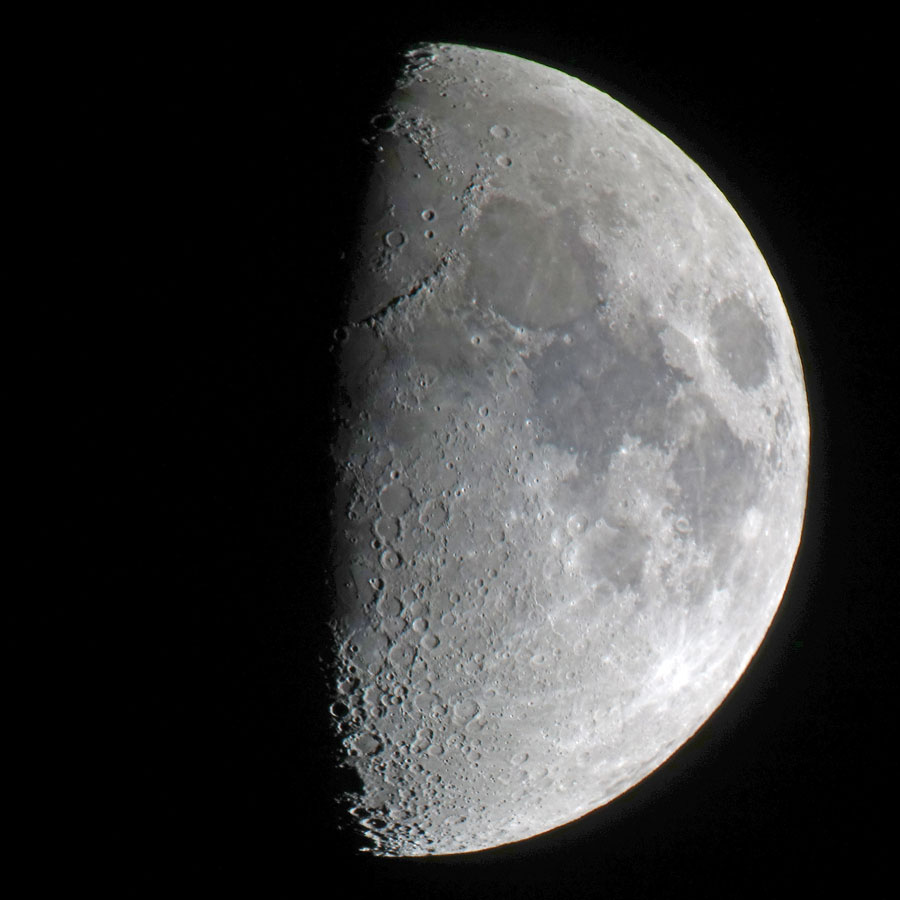 |
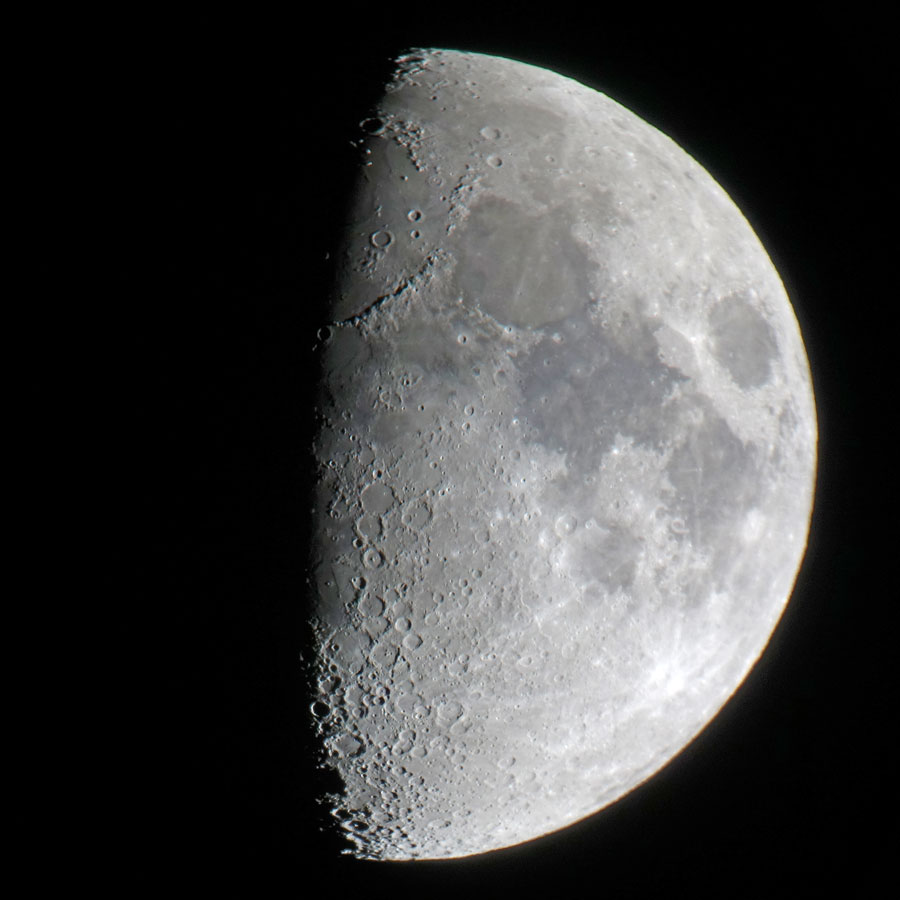 |
|
Skymax-127, ISO 125, 1/100 sec, f/2.8, 35 mm; 3000 pixels |
Skymax-127, ISO 125, 1/100 sec, f/2.8, 35 mm; 3000 pixels |
And here again are sections showing Vallis Alpes and Rupes Recta:
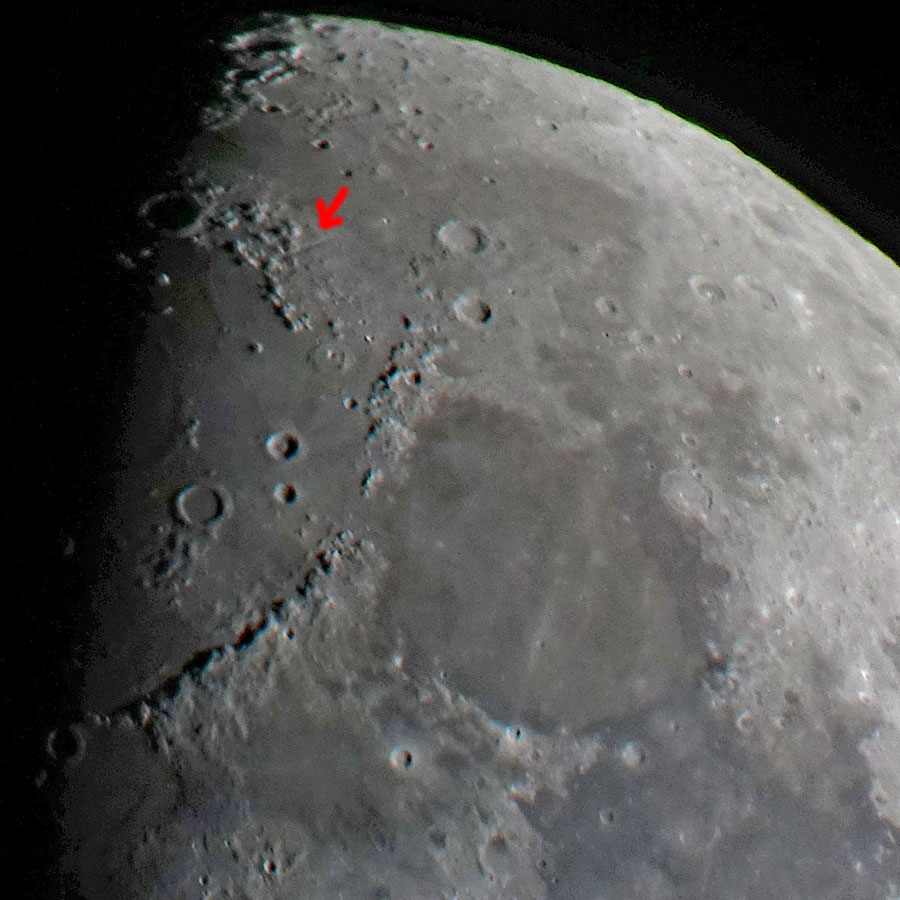 |
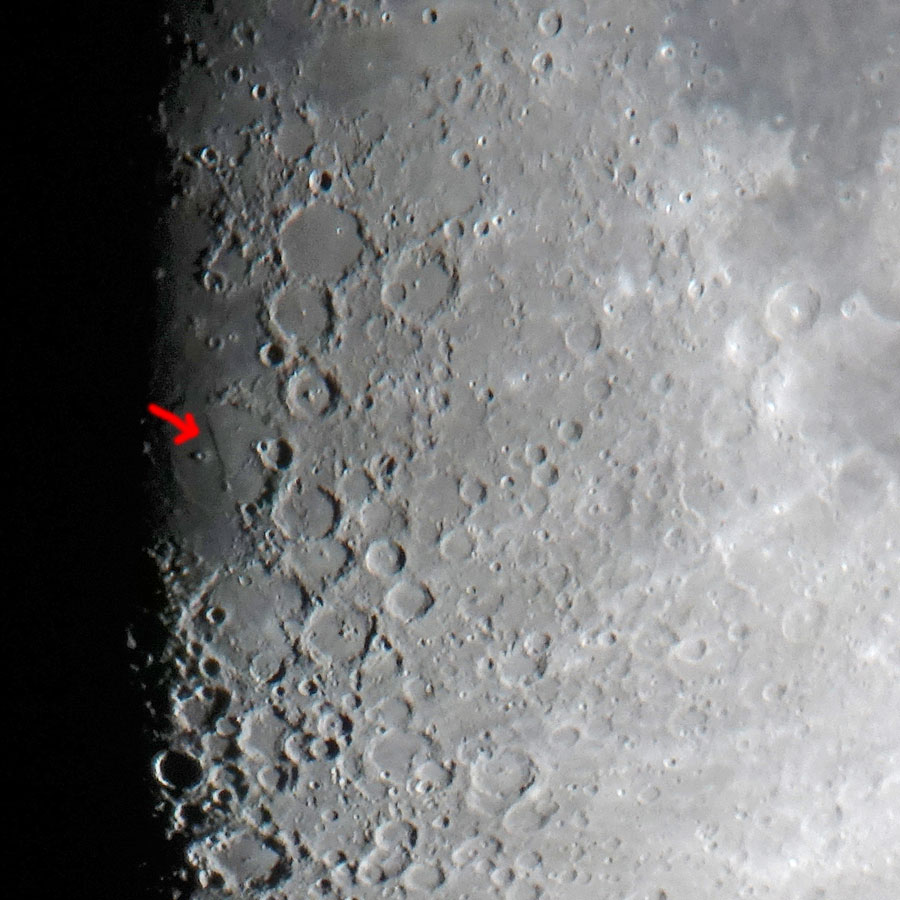 |
|
Vallis Alpes - from photo 1; 1200 pixels |
Rupes Recta - from photo 2; 1200 pixels |
Comparison of the Telescopes Based on a Detail Section
 |
 |
|
PS 72/432: Rupes Recta - from photo 4; 1200 pixels |
Skymax-127: Rupes Recta - from photo 2; 1200 pixels |
According to their different apertures, both telescopes have a different resolution. Thus should lead to the result that the photos taken with the Skymax-127 show more details, even when the details are about the same size. On the photos taken with the PS 72/432 such details should simply be missing. However, I did not succeed in noticing such a difference right away, especially since the refractor photo is a bit sharper than the one taken with the Maksuov telescope.
May 13, 2019, PS 72/432 with 10 mm Eyepiece
The photos taken on that day were better exposed than the ones taken the day before. But this time I did not fully exploit the magnification potential of the camera and only took pictures with a focal length of 35 mmm instead of 50 mm. Thus, the moon sections have fewer pixels (2500 instead of 3000 or 3200) this day.
On the pictures, you can see that the Terminator has moved on. Now, you can see the crater Plato, which was at the Terminator the day before. Vallis Alpes and Rupes Recta can still be seen, as well as Rupes Altai, which can also be seen on the photos from the previous day, but which I had not noticed in the telescope.
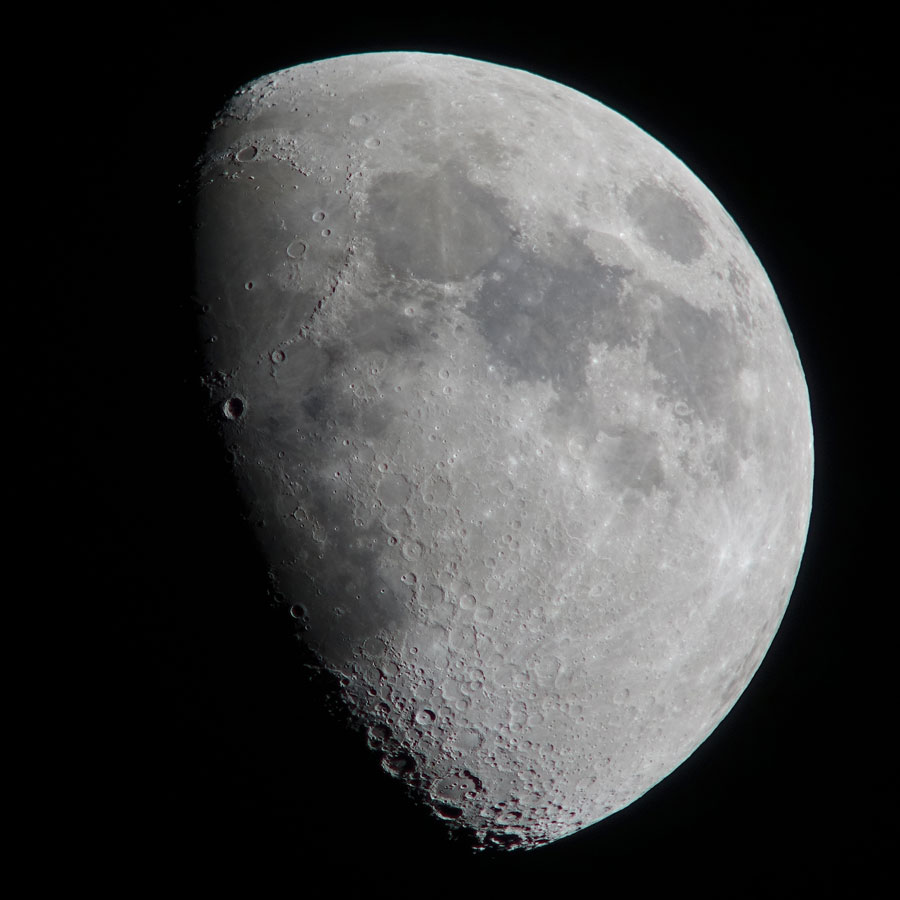 |
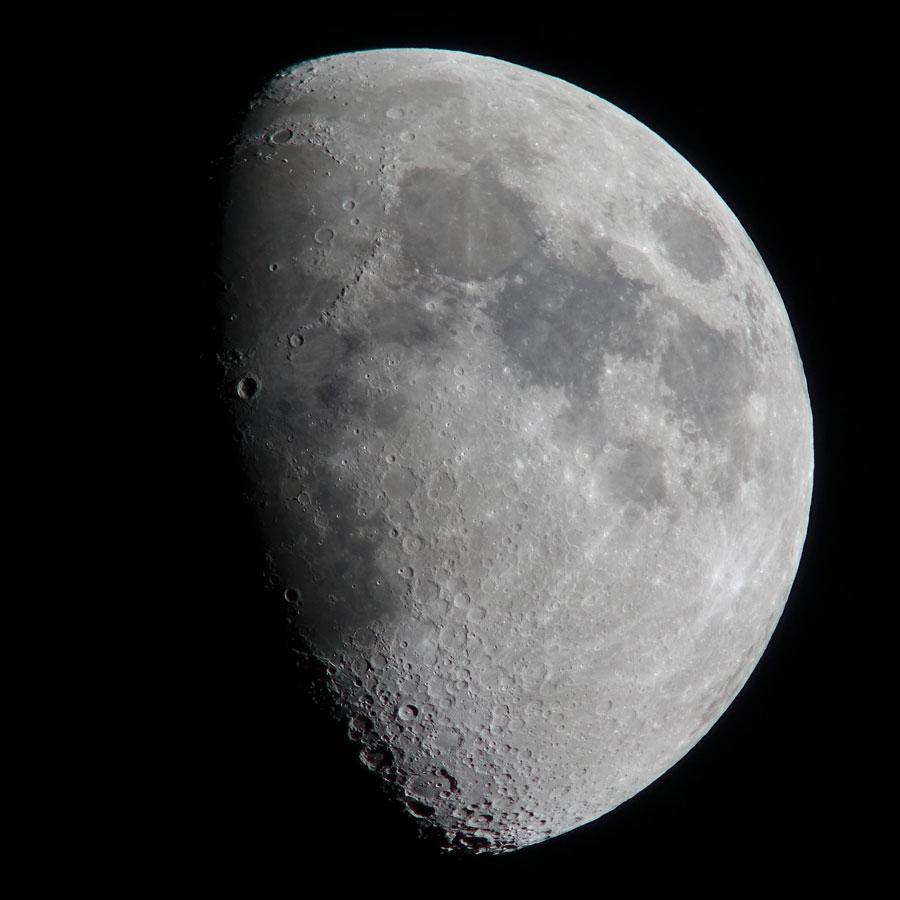 |
|
PS 72/432, ISO 125, 1/100 sec, f/2.8, 35 mm; 2500 pixels |
PS 72/432, ISO 125, 1/100 sec, f/2.8, 35 mm; 2500 pixels |
The details again include Vallis Alpes and Rupes Recta, as well as Rupes Altai. In the following I show some examples from the photos above:
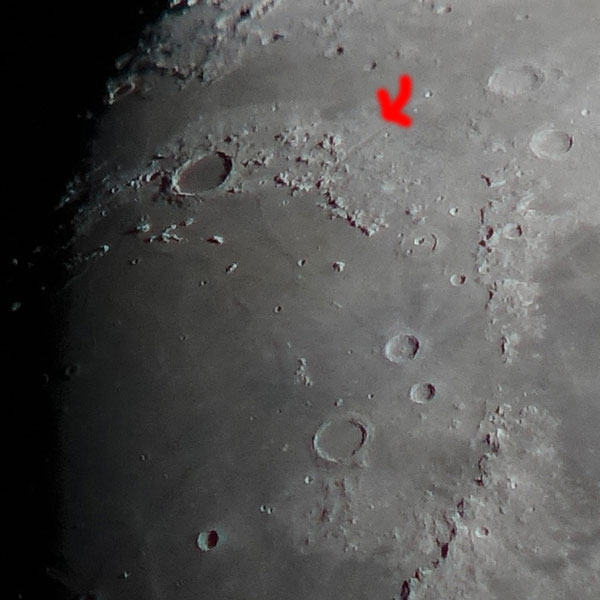 |
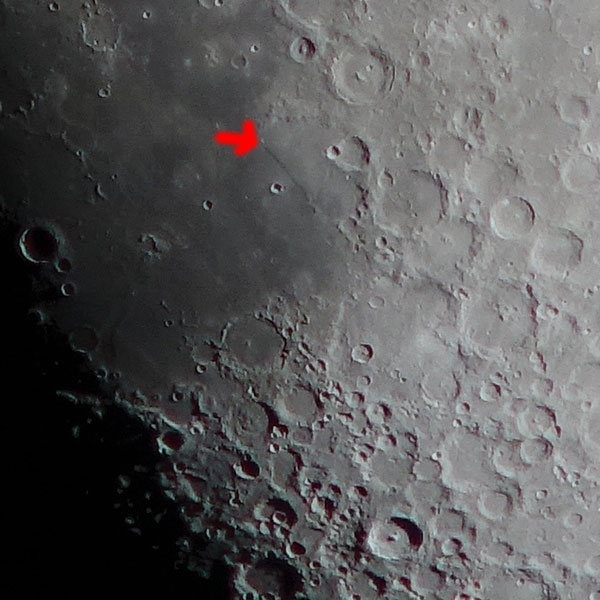 |
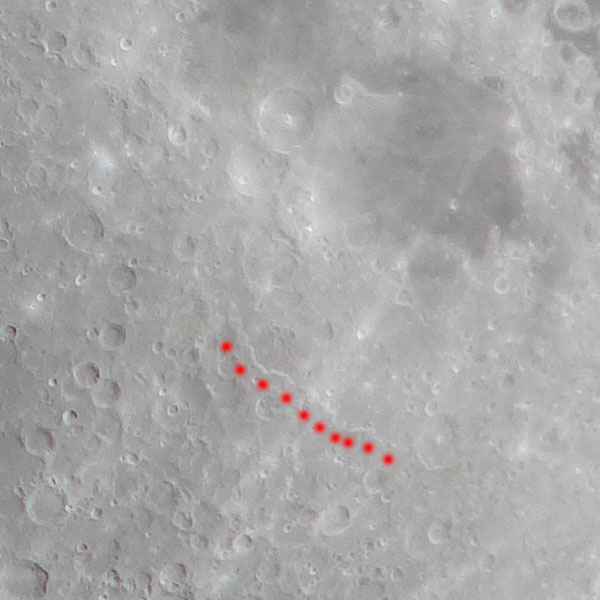 |
||
Vallis Alpes - from photo 1; 600 pixels |
Rupes Recta - from photo 1; 600 pixels |
Rupes Altai - from photo 1; 600 pixels | ||
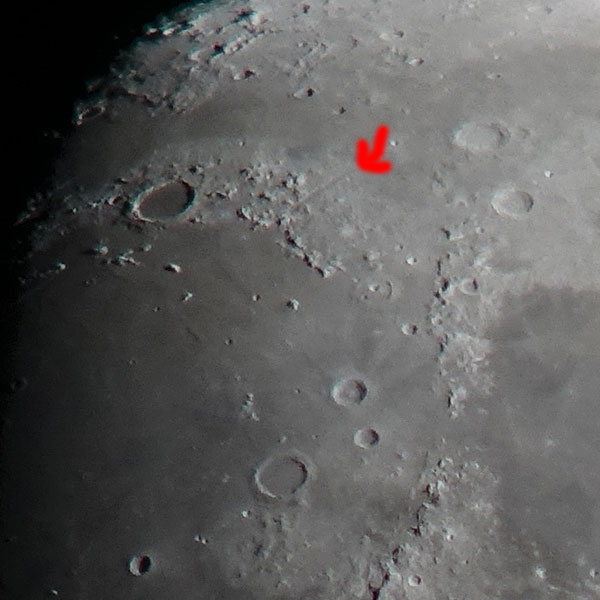 |
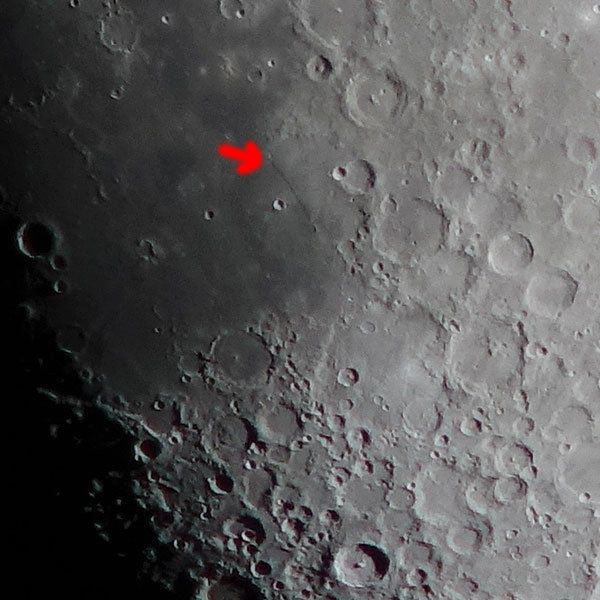 |
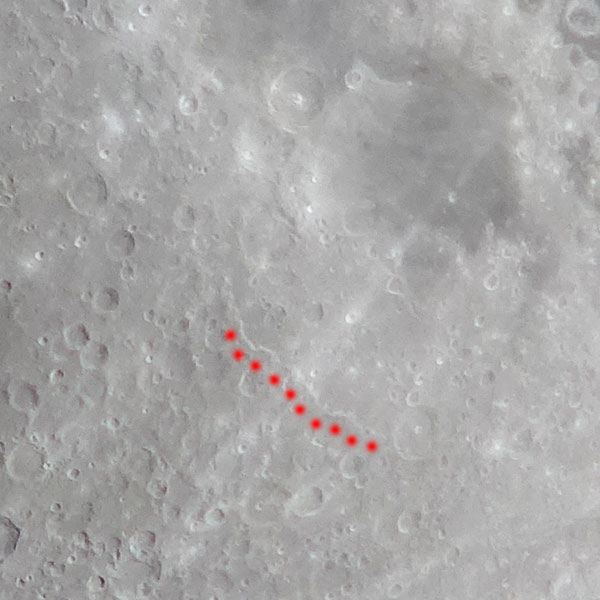 |
||
Vallis Alpes - from photo 2; 600 pixels |
Rupes Recta - from photo 2; 600 pixels |
Rupes Recta - from photo 2; 600 pixels |
May 14, 2019, PS 72/432 with 10 mm Eyepiece
This was once again the day of the "golden handle"! On the third day, the Terminator was located so cheap well that the golden handle (Montes Jura) was easy to see. The first photo was taken with a camera focal length of 35 mm, the second with 50 mm, so that in the latter case more pixels are available. I only show the golden handle here, but Vallis Alpes is still visible in the large versions.
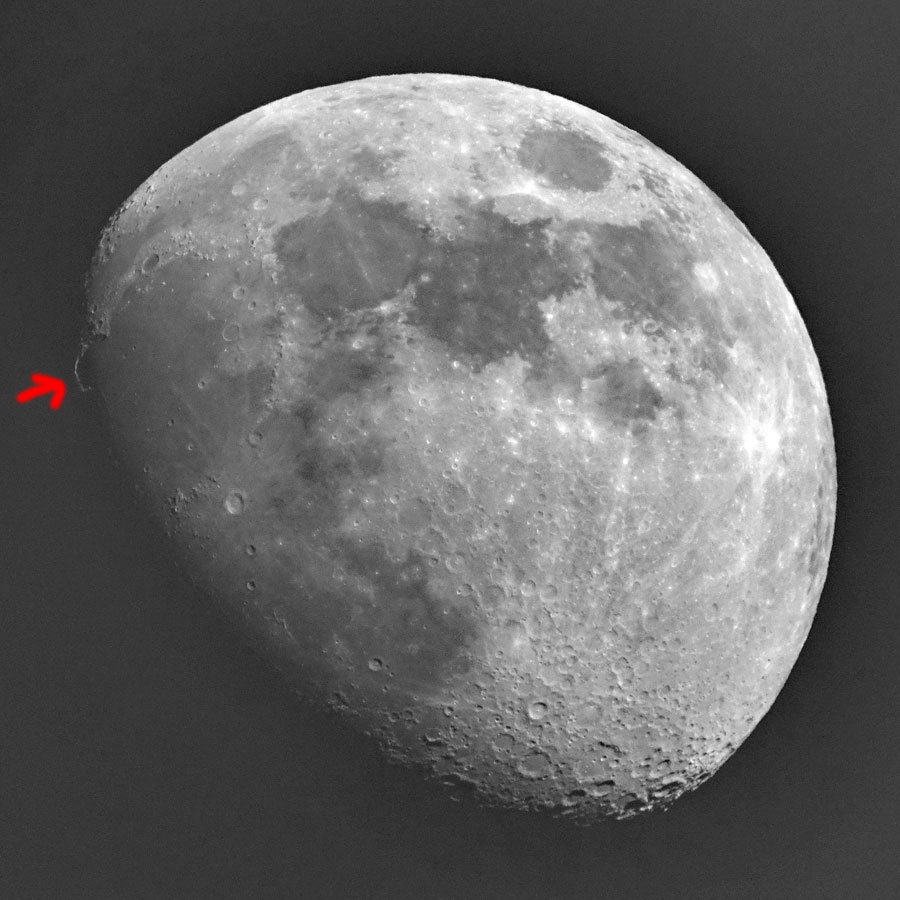 |
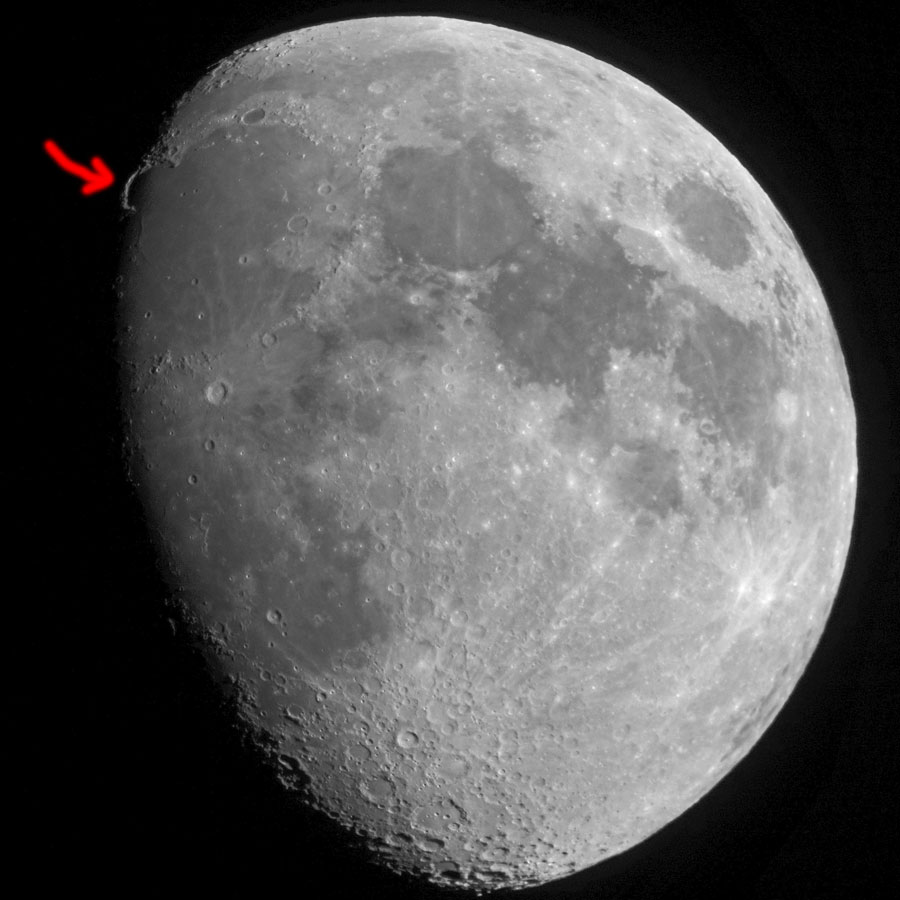 |
|
PS 72/432, ISO 125, 1/250 sec, f/2.8, 35 mm; 2500 pixels |
PS 72/432, ISO 125, 1/250 sec, f/2.8, 50 mm; 3200 pixels |
May 15, 2019, PS 72/432 with 10 mm Eyepiece
On the fourth day, the Terminator had already left the Jura mountains, I only managed to take just one "usable" photo. I used it to draw my brother's attention to some moon structures close to the Terminator:
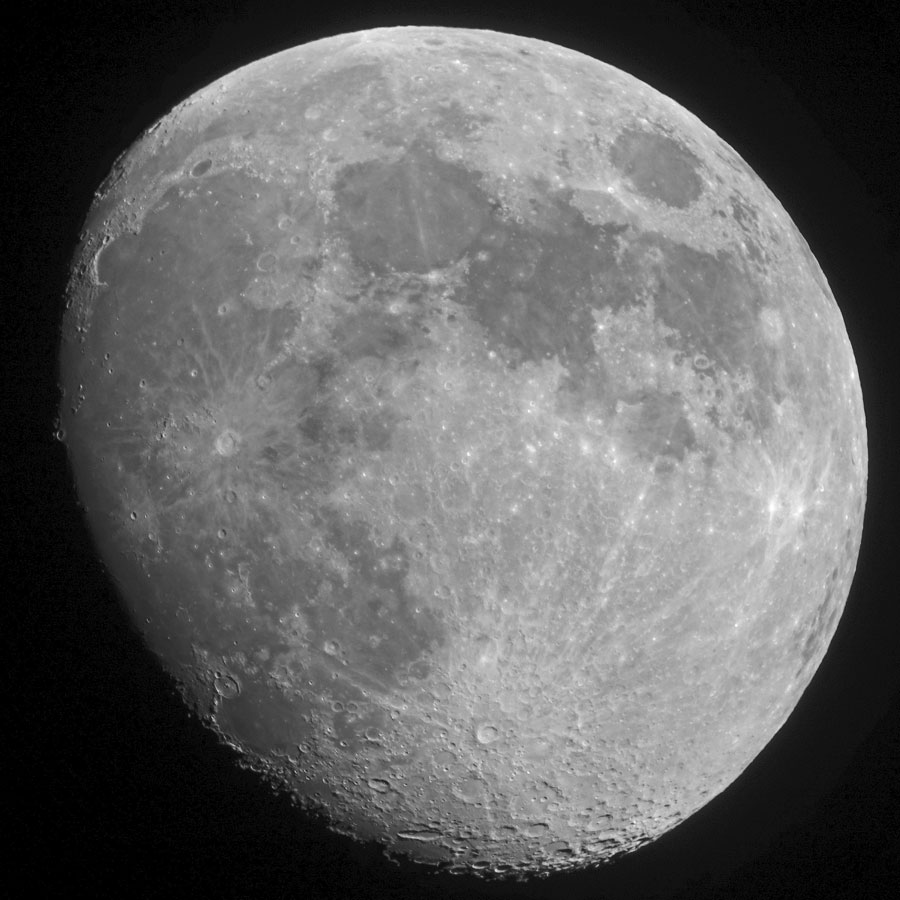 |
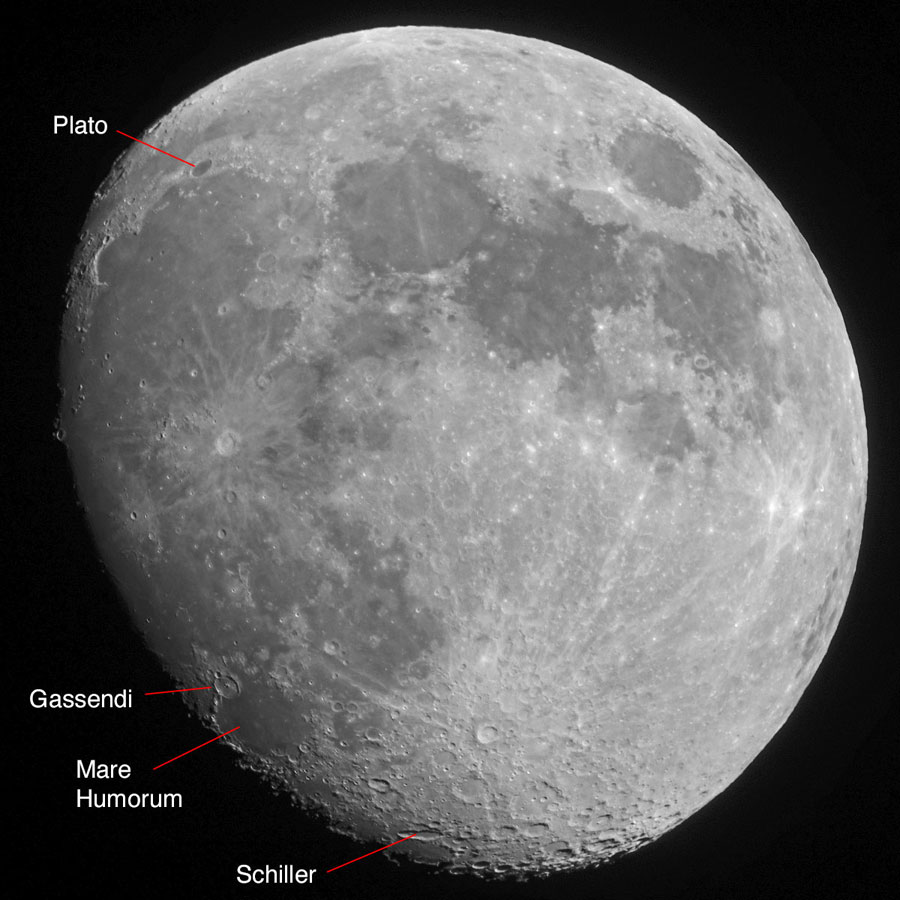 |
|
PS 72/432, ISO 125, 1/100 sec, f/2.8, 50 mm; 3200 pixels |
PS 72/432, ISO 125, 1/100 sec, f/2.8, 50 mm; 1200 pixels |
May 17, 2019, PS 72/432 with 10 mm Eyepiece
I took the last photos of this series one day before full moon in Erkerode, and not in Mühlhausen. Beside a lot of not very sharp photos, of which I present one, I just got one really sharp photo, which I also present here:
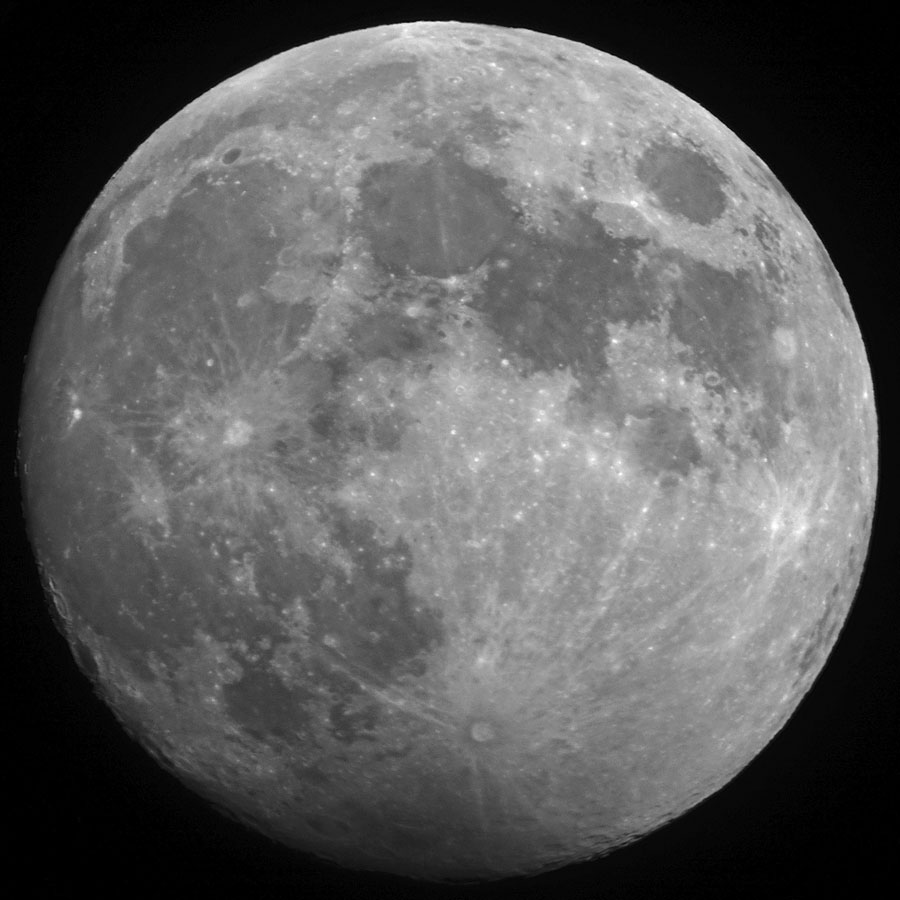 |
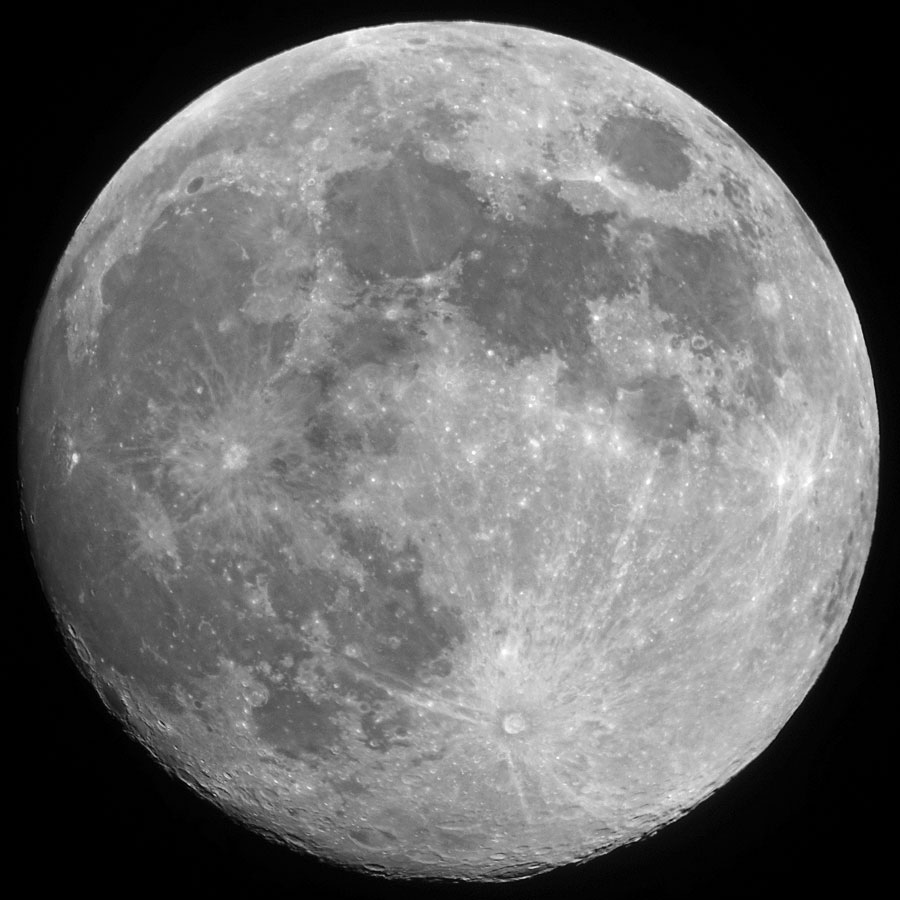 |
|
PS 72/432, ISO 125, 1/100 sec, f/2.8, 50 mm; 3200 pixels |
PS 72/432, ISO 125, 1/100 sec, f/2.8, 50 mm; 3200 pixels |
Comparison of the Days
When comparing the days, you should primarily track and compare the structures at the Terminator (shadow boundary).
For an exact evaluation, you have to look at the large versions (all photos are edited)! Clicking on the photos shows them in double size (1:1) in a new window.
 |
 |
|
May 12, 2019: PS 72/432, ISO 125, 1/125 sec, f/2.8, 50 mm; 3200 pixels |
May 12, 2019: Skymax-127, ISO 125, 1/100 sec, f/2.8, 35 mm; 3000 pixels |
|
 |
 |
|
May 13, 2019: PS 72/432, ISO 125, 1/100 sec, f/2.8, 35 mm; 2500 pixels |
May 14, 2019: PS 72/432, ISO 125, 1/250 sec, f/2.8, 50 mm; 3200 pixels |
|
 |
 |
|
May 15, 2019: PS 72/432, ISO 125, 1/100 sec, f/2.8, 50 mm; 3200 pixels |
May 17, 2019: PS 72/432, ISO 125, 1/100 sec, f/2.8, 50 mm; 3200 pixels |
Conclusions
These photos taken with the Sony RX100 M4 in mid-May 2019 showed me that it is not always easy to get sharp photos. Of course, I only present the sharp ones here (with one exception...). For photos taken with the 1:50 method, however, I can be very satisfied.
Interestingly, I am not able find any significant difference in the resolution between the PS 72/432 and the Skymax-127 photos. But maybe I searched for these in the wrong locations...
| 02.06.2019 |